
Earlier this week, the UK Government released its English Housing Survey 2011 to 2012, which provided some sobering data about the situation facing first home buyers (FHBs).
According to the Survey, the rate of home ownership has slumped to 65.3%, which was the seventh consecutive yearly fall and represented the lowest rate of home ownership since 1987 (see next chart).
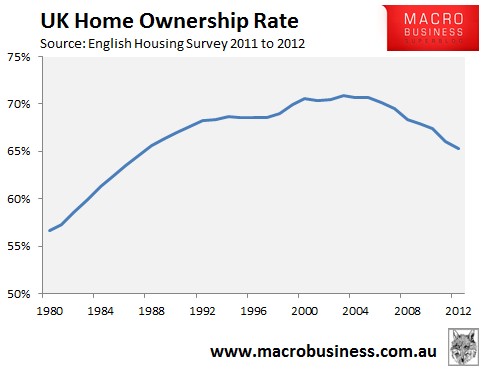
The Survey also revealed that just 10.3% of home owners were under 35 (see next chart).
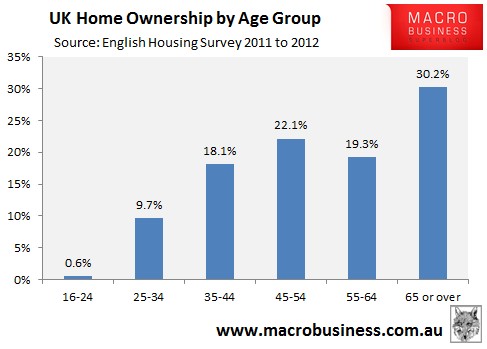
Meanwhile, the Mail Online published an interesting article claiming that housing affordability is so bad that young people in the UK must save for more than a decade before they could afford to buy their first home, with most needing help from their parents (see next table).
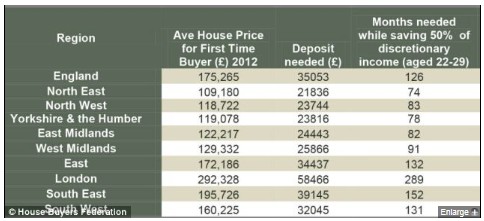
An interesting aspect of the UK’s falling home ownership rate is that it comes despite a significant fall in real home prices (see next chart).
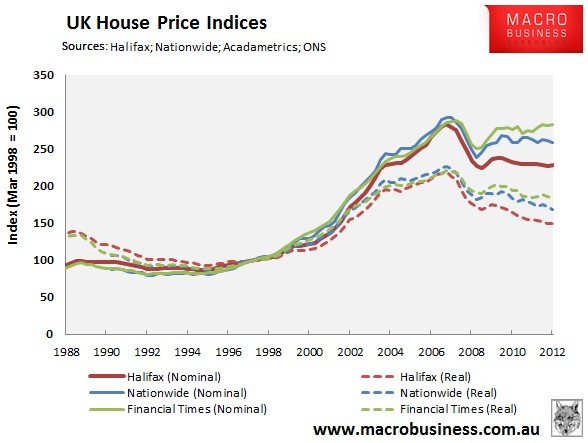
And a sharp lowering of mortgage interest rates (see next chart).
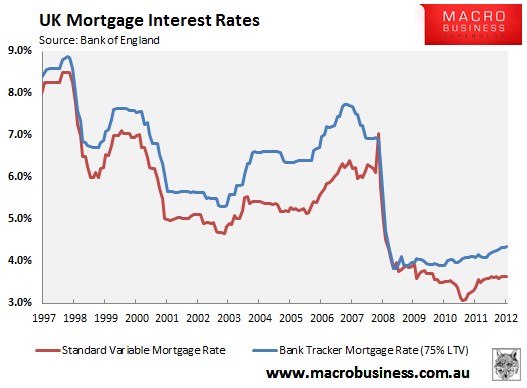
These two factors combined have resulted in a big improvement in housing and mortgage affordability, according to Halifax (see next chart).
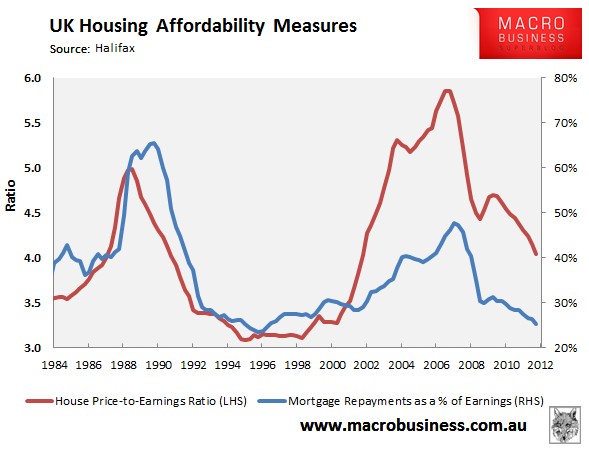
Moreover, in August last year, the Bank of England (BoE) introduced a scheme entitled Funding for Lending (FFL), which has significantly improved mortgage credit conditions in the UK. On the back of the scheme, the Council for Mortgage Lending (CML) forecast a near 10% rise in lending for 2013 to £156bn, from £143bn last year, which would be the highest level of lending since 2008.
However, the overarching problems facing FHBs in the UK, and the economy more generally, are not related to credit availability, but rather the ongoing strangulation of supply owing to the UK’s highly restrictive urban planning system. Earlier this week, the Centre for European Reform published a fantastic article entitled Why British prosperity is hampered by a rigged land market, which explains some of the key issues involved:
The British have the least living space per head, the most expensive office rents and the most congested infrastructure of any EU-15 country. Thanks to a rapidly growing population – the result of a healthy birth-rate and immigration – these trends are worsening steadily. At the same time, the British economy is languishing in a prolonged slump brought on by a collapse of demand. The answer is obvious: Britain needs to build more. Unfortunately, the obstacles to development are formidable. Britain’s supply-side problems are of a different character to those holding back other struggling European economies, but arguably no less serious…
Housing, commercial property and infrastructure are central to a country’s economic and social well-being. The UK’s essentially rigged market for land and its restrictive planning system are as big an obstacle to economic growth as restrictive labour markets and protected professions are in Southern Europe…
The number of new homes built each year in Britain has lagged far behind demand from a growing population for 30 years. Despite faster population growth, house construction is currently running at half the level of the 1960s. At the same time the average size of homes built in Britain is now the smallest in the EU. The result of these two trends has been a steady fall in the amount of living space per head. Property prices relative to average household incomes have come down a bit since 2007, but remain very high. Moreover, the problem is not just restricted to the residential sector: Britain has the highest office rents in the EU. Firms in cities such as Manchester pay more than in Frankfurt or Milan. And transport infrastructure is very expensive to build in Britain, which is one reason why there is too little of it.
Britain is small and densely-populated, but does not suffer from particularly acute land scarcity. Around 13 per cent of the UK is built on, a lower proportion than in countries with a similar population density such as Germany, Belgium or the Netherlands. Britain’s problem is that the supply of new housing and commercial space is uniquely unresponsive to increases in property prices. Alone among the countries that experienced a house price boom in the run up to the financial crisis, Britain had no construction boom. The number of houses being built picked up only slightly, despite UK house prices rising by more than in any other developed countries except Ireland.
This situation has far-reaching economic and social consequences for the UK. Massive house price inflation has aggravated the UK’s already high levels of inequality by shifting wealth from the young (and property-less) to the old (and propertied)…
The two reasons for Britain’s land-use woes – a complex planning system and insufficient land for development – are inter-related. A major constraint on the supply of land is the existence of a protected ‘greenbelt’: land around cities on which development is very tightly controlled…
The UK should, of course, redevelop so-called ‘brownfield’ sites – vacant or derelict buildings and land. But this will only ever comprise part of the solution to its land use crisis. By its very nature, brownfield land is concentrated in parts of the country where people do not want to live. And it is often very expensive to redevelop, not least because the government has stipulated that 60 per cent of new homes must be built on brownfield sites…
The article, which I highly recomment reading, goes on to argue for a relaxation of the UK’s urban growth constraint (Green Belt) as well as the implementation of a broad-based land tax.
There are lessons here for Australia.

